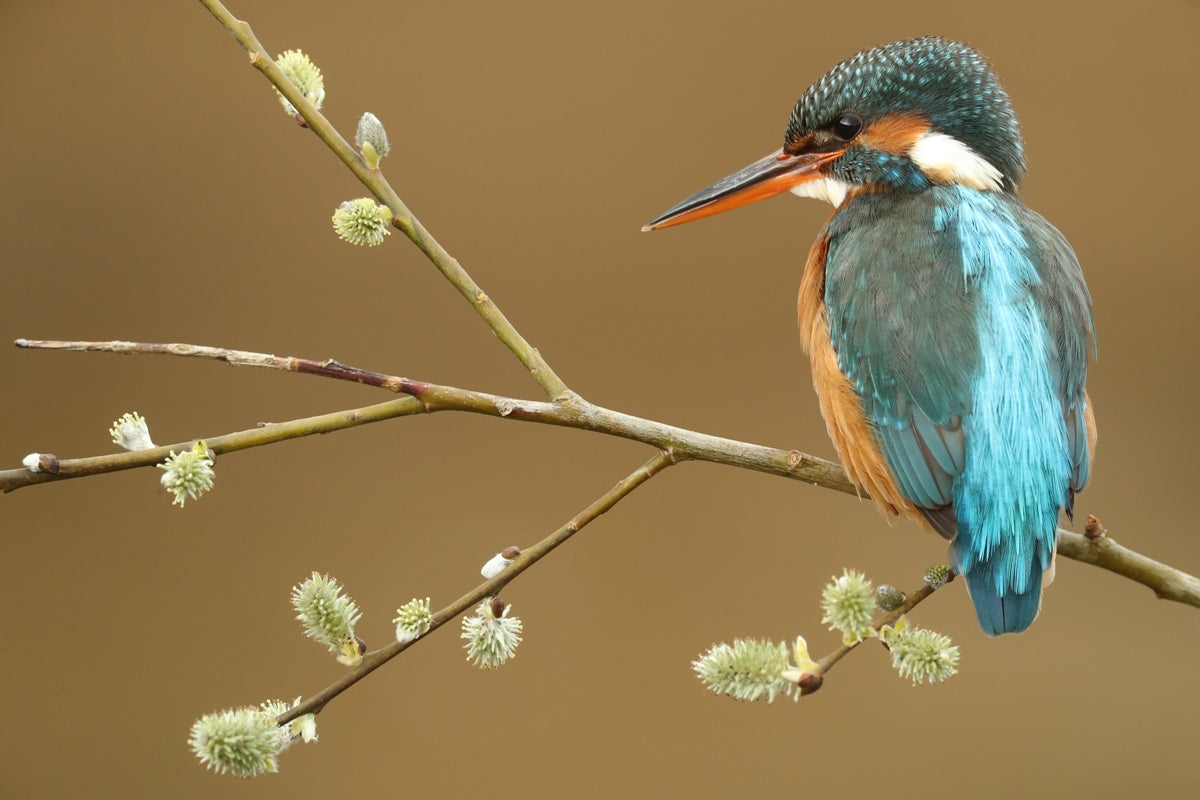
Kingfishers are undoubtedly one of Britain's most iconic waterside birds but despite their dazzling beauty, their future is precarious. These bright blue birds are listed as 'amber' by conservationists - which means their future survival is in danger. They are also registered as a Schedule 1 species under the Wildlife and Countryside Act, meaning they are in need of additional protection.
The main challenges kingfishers face are:
Cold Temperatures
Kingfishers struggle to hunt in freezing conditions and obviously can’t fish at all when water is frozen. But even summer cold snaps are a threat to kingfishers since these tiny birds are featherless for the first few weeks of their lives and the adult birds struggle to keep them warm if it gets too cold.


Heavy Rainfall
Prolonged periods of rain can lead to flooding, which often spells disaster for kingfishers. The fish that they hunt disperse in fast-flowing water and the water becomes clouded with mud which makes it difficult for kingfishers to find and, even to see, their prey. This is critical if the kingfishers are feeding young. And of course, rising water levels can result in flooded nest sites when chicks tragically drown.
Drought
Drought conditions are an increasing problem for kingfishers. In recent years, historic waterways have dried up, reducing their food source. Tragically, the over-extraction of water by industry exacerbates this.
Industry
Chemical and biological pollution of rivers by industry and agriculture affects the availability of fish in the water, making long stretches of waterways uninhabitable
Fewer River Banks
A lack of good nest sites is a big problem for kingfishers. Successful breeding is most common in vertical soil river banks. If the bank isn’t steep enough they are much more vulnerable to predation.
Predators
Kingfishers have many predators, ranging from cats, rats, stoats, weasels, sparrowhawks and mink, and they are particularly vulnerable to attack when nesting.
Disturbance
Landowners often unintentionally destroy kingfisher nests when maintaining waterways. Kingfishers are early nesters and maintenance should be carried out where possible outside the breeding season. Education is key here.
How to help Kingfishers:
Keep Waterways Clean
Chemical and biological pollution of rivers by industry and agriculture affects the availability of fish in the water, making long stretches of waterways uninhabitable. Farmers need to take care not to allow run-off into rivers and streams.
Schedule Maintenance Work For Outside The Breeding Season
They can also do their bit by ensuring that draining work and maintenance to waterways are carried out where possible outside the breeding season. Kingfishers are early nesters and can already be raising a brood by March.


Provide Suitable Nest Sites
A practical thing to help populations of kingfishers is to provide a nest site for them. Kingfishers nest in vertical mud banks at least three feet high with little or no vegetation on it. If you have a suitable bank, make sure it is clear of vegetation, particularly brambles as well as other debris. Do this in early February to minimise disturbance in the breeding season. If your river bank slopes, you can easily straighten a suitable three-metre section. You don’t need heavy machinery - a spade will do the job relatively easily.
Provide Perches
Kingfishers fish from perches that overlook clear, slow-moving water inhabited by small fish. They will use anything as a perch, but if you have convenient tree branches then cut them clear so there is space for the birds to land on and dive from. Bridges and walls also make perfect perches if they are in the right place.
Make Your Own Kingfisher Perch:
If there are no convenient perches, you could always make your own. Simple knock a sturdy post into the ground and attach a horizontal branch extending four feet above the water. Hazel is particularly good for this job as it is hard-wearing. Wait to see if it’s accepted: if you notice your perching branch is smooth in one place, especially if any powdery green algae has been worn away, this means it is being used. There might be evidence of fish scales too.


Read More
If you have kingfishers near you, here's how to spot them:
https://www.robertefuller.com/how-to-see-kingfishers-kingfisher-art-studies/
I enjoy them so much I built a hide so that I could watch them inside their nest:
https://www.robertefuller.com/when-kingfishers-disappear-underground-kingfisher-art-study/
My studies inspired these paintings:
https://www.robertefuller.com/my-collection-of-kingfisher-paintings/














